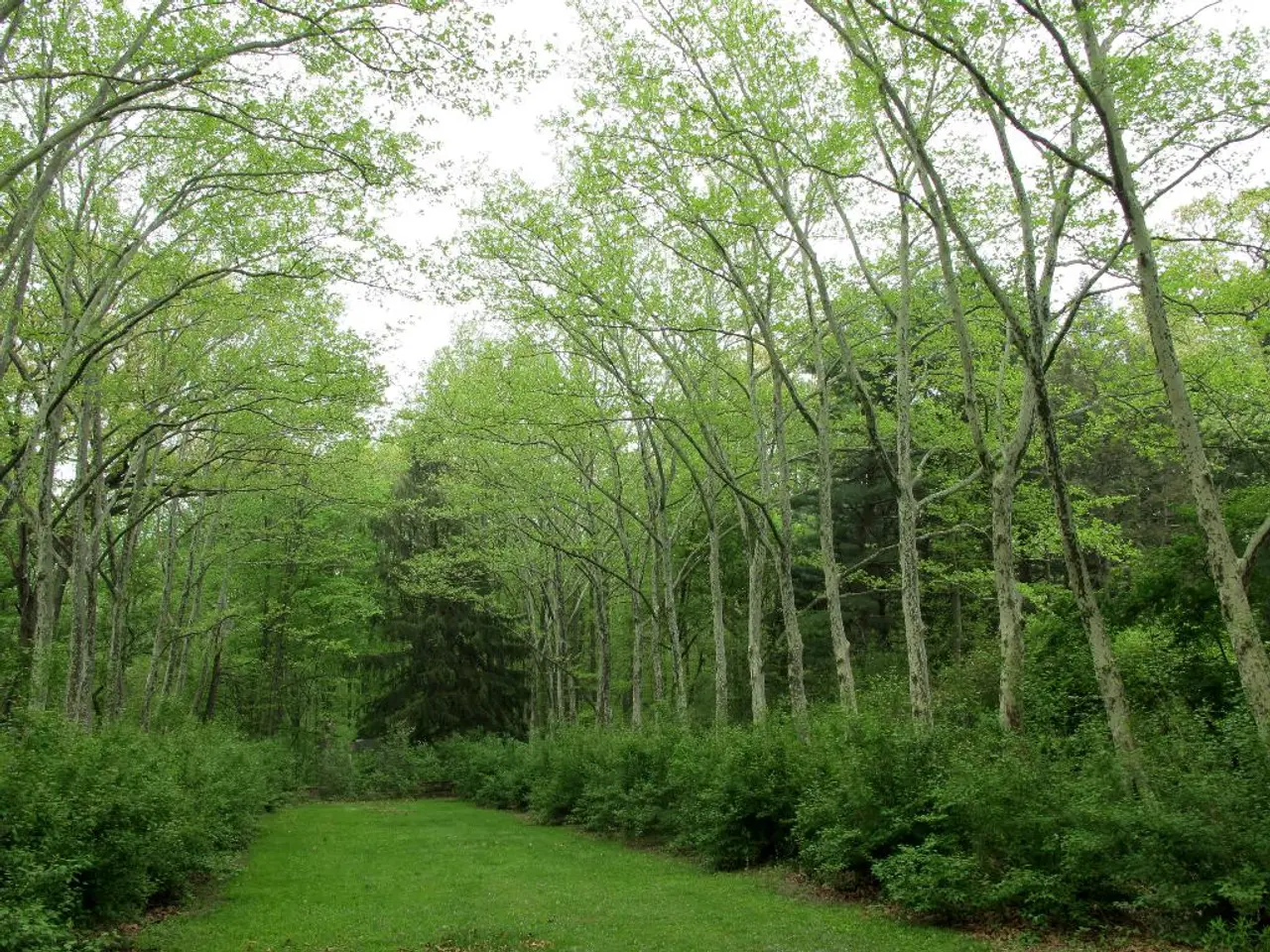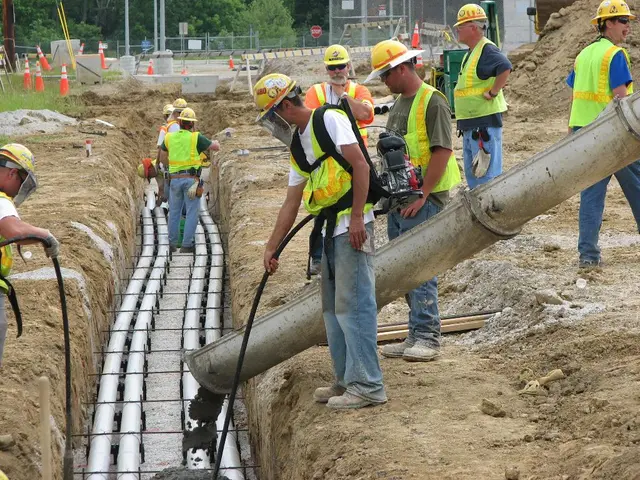Animals and plants face severe threats due to the ongoing heatwave in France, a condition far from being simply weather-related.
In southern France, a heatwave has intensified, with temperatures soaring above 42-43°C, causing concern among meteorologists and agricultural experts alike [1]. The heatwave has placed twelve departments under a red "heatwave" alert by Météo France on Monday and Tuesday [2].
This extreme heat is taking a toll on vegetation, with a loss of fruits, flowers, and leaf burn reported in many types of plants. Tomatoes, a common garden and farm crop, grow optimally up to around 32-33°C, but their growth rate decreases above 40°C, leading to a significant loss of produce [3].
Agroclimatologist Serge Zaka states that most vegetation and animals in the southwest of France cannot withstand temperatures above 42-43°C. The heatwave is also extremely detrimental to the well-being of animals, similar to its effects on humans [4]. As a result, most agricultural sectors will be affected, leading to a loss in milk production and a decrease in egg production [5].
Pistachios, olives, and sorghum may fare better in the heat, but they are not native to the region and may still be affected [6]. This heatwave is now considered a heatwave season, with multiple heatwaves possible in a single summer [7].
The French government is urging citizens to take precautions during this heatwave. The Canicule info service hotline (0 800 06 66 66, free call between 9 am and 7 pm) is available for heat advice [8]. This advice is also available on the ministry's website [9].
Looking back, the number of heatwaves in France has increased fourfold since the 2000s [10]. This trend has contributed to unprecedented extreme heat events and related impacts such as larger and more frequent wildfires. For example, in August 2025, France witnessed its largest wildfire in decades in the Aude region, spreading rapidly in hot, dry conditions and fueled by a heatwave [1].
Looking ahead, climate projections indicate that heatwaves in France will become increasingly frequent, intense, and prolonged. This means that the country can expect more extreme summer temperatures and dry spells, exacerbating risks such as wildfires, health impacts, and stresses on infrastructure like electricity distribution networks [3].
In summary, there has been a clear rise in heatwave frequency and severity in France since the 2000s, with recent years seeing historic heatwaves tied to climate change. These heatwaves have contributed to exceptional events such as the largest wildfires recorded in decades. Future trends point toward continued increases in heatwave frequency, intensity, and associated hazards, driven by ongoing global warming.
References:
[1] Météo France. (2021). Heatwave in southern France. Retrieved from https://www.meteofrance.com/previsions/heatwave
[2] World Meteorological Organization. (2021). France heatwave and wildfires. Retrieved from https://public.wmo.int/en/our-mandate/climate/wmo-statement-france-heatwave-and-wildfires
[3] European Commission. (2021). Climate change and heatwaves in Europe. Retrieved from https://ec.europa.eu/clima/policies/adaptation/what/heatwaves_en
[4] Zaka, S. (2021). Impacts of heatwaves on vegetation and animals in France. Retrieved from https://agroclimat.fr/impacts-de-la-canicule-sur-les-vegetaux-et-les-animaux-en-france
[5] French Ministry of Agriculture. (2021). Heatwave advice for farmers. Retrieved from https://www.agriculture.gouv.fr/actualites/2021/07/26/canicule-conseils-aux-eleveurs
[6] French National Institute for Agricultural Research. (2021). Heat tolerance in agricultural crops. Retrieved from https://www.inrae.fr/fr/actualites/2021/07/28/tolerance-a-la-chaleur-dans-les-cultures-agricoles
[7] Météo France. (2021). Heatwave season in France. Retrieved from https://www.meteofrance.com/previsions/canicule
[8] French Ministry of Health. (2021). Heatwave advice. Retrieved from https://www.gouvernement.fr/info-coronavirus/protection-sante/canicule-conseils-de-protection
[9] French Ministry of the Interior. (2021). Heatwave information. Retrieved from https://www.interieur.gouv.fr/Actualites/Actualites-de-l-interieur/Canicule-information
[10] French National Meteorological Service. (2021). Increase in heatwaves in France. Retrieved from https://www.meteofrance.com/previsions/canicule/histoire
- The extreme heat in southern France is not only affecting agricultural produce, but it also poses a significant threat to animal well-being, similar to its effects on humans, as stated by agroclimatologist Serge Zaka.
- As temperatures continue to rise due to climate change, we can expect an increase in the frequency and severity of heatwaves, leading to potential hazards such as wildfires and health impacts, as indicated by climate projections.
- While some crops like pistachios, olives, and sorghum may fare better in heat, they are not native to the region and could still be affected, highlighting the need for environmental-science research into developing more resilient health-and-wellness practices and therapies-and-treatments for both plants and animals.




